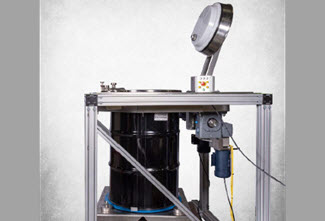Hanford waste tanks moved for disposal

Two large tanks near the Effluent Treatment Facility (ETF) at the Department of Energy’s Hanford Site in Washington state were removed recently to make way for future wastewater treatment activities at the ETF.


Two large tanks near the Effluent Treatment Facility (ETF) at the Department of Energy’s Hanford Site in Washington state were removed recently to make way for future wastewater treatment activities at the ETF.

The Department of Energy's Advanced Research Projects Agency–Energy (ARPA-E) has awarded a total of $36 million for 11 projects to develop technologies that will limit the amount of waste produced from advanced reactors and will support sustainable domestic fuel stocks. The projects include research into the facilities and systems required to reprocess, recycle, and dispose of spent fuel generated through diverse advanced reactor fuel cycles.
By Rob Weber, Projects and Proposals Manager, Central Research Laboratories
Addressing Current Problems
 Bag-out operations can pose many issues to the TRU waste handling and disposal process. Among these are operator and facility safety, operational time, excess waste volume, and increased shipping costs to a waste repository.
Bag-out operations can pose many issues to the TRU waste handling and disposal process. Among these are operator and facility safety, operational time, excess waste volume, and increased shipping costs to a waste repository.
Historically, removing hazardous waste from gloveboxes has involved using bags for primary containment. This bag-out method can prove tedious, repetitive, and time-consuming to ensure it follows all required safeguards to transfer waste without breaching containment. Layers of bags, yards of tape, and multiple filters are all added to the waste stream to transfer hazardous waste safely from the glovebox into a disposal drum.
Following a comprehensive and open national consultation, the United Kingdom’s Radioactive Waste Management (RWM) organization on February 18 published its approach to evaluating possible sites in England and Wales for a deep geological disposal facility. A wholly owned subsidiary of the U.K. government’s Nuclear Decommissioning Authority, RWM will be responsible for the siting, construction, operation, and eventual closure of a disposal facility for the United Kingdom’s high- and intermediate-level radioactive waste.